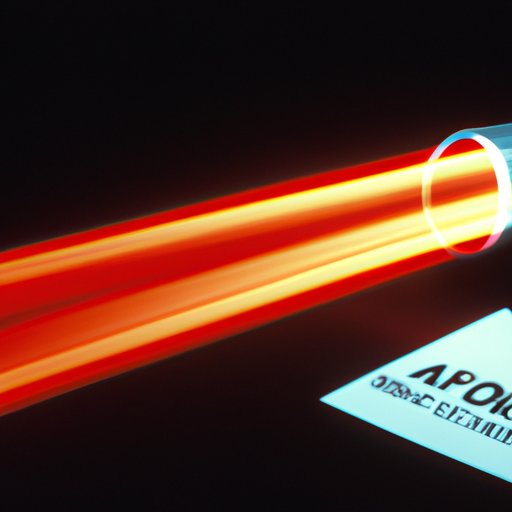Introduction
The speed of light is one of the most fascinating mysteries of science. For ages, people have been curious about this mysterious phenomenon and wondered how fast does light travel. Light is essential to our everyday lives, and understanding its speed can give us insight into many aspects of our universe.
But what exactly is the speed of light? The speed of light, or c, is the speed at which light travels in a vacuum. It is the fastest speed possible in nature, and it is also the fundamental constant of the universe. It is incredibly important to know how fast light travels, as it affects many aspects of life and the universe.
Exploring the Speed of Light: How Fast Does It Travel?
The history of measuring the speed of light began in 1676 when Ole Rømer observed that the time it took for light to reach Earth from Jupiter varied depending on the distance between the two planets. This was the first indication that light had a finite speed. Since then, scientists have made great strides in understanding and measuring the speed of light.
Calculating the speed of light in a vacuum is relatively straightforward. According to the modern definition, the speed of light is 299,792,458 meters per second, or roughly 186,000 miles per second.
However, the speed of light is not always the same. There are several factors that can affect the speed of light, such as the medium it is travelling through. For example, light travels faster through air than it does through water. Additionally, the temperature of the medium can also affect the speed of light.

Unveiling the Mysteries of Light: Measuring Its Speed
Measuring the speed of light is an important part of understanding its behavior. To measure the speed of light, scientists use a variety of tools such as lasers, mirrors, and interferometers. These tools allow scientists to measure the time it takes for light to travel a certain distance and calculate its speed.
When measuring the speed of light, scientists use a variety of units of measurement. The most common unit of measurement is the meter per second (m/s), but other units such as kilometers per second (km/s) and miles per second (mi/s) are also used.

From Here to Infinity: A Look at the Speed of Light
The speed of light is not affected by distance, meaning it remains constant no matter how far it travels. However, the amount of time it takes for light to travel a certain distance can vary depending on the distance. For example, if light travels from Earth to the Moon, it will take approximately 1.3 seconds for the light to arrive.
The speed of light also changes over time. As the universe expands, the speed of light decreases slightly. This is due to the fact that the space between galaxies is increasing, thus slowing down the speed of light.
Breaking the Speed Limit: Examining How Fast Light Travels
One way to understand the speed of light is to compare it to other forms of energy. For example, sound travels much slower than light, at only 343 m/s. Additionally, radio waves travel at the speed of light, but they are much slower than visible light.
The speed of light is also much faster than other forms of energy, such as electricity and magnetism. Electricity travels at approximately 0.3% of the speed of light, while magnetic fields travel at less than 0.000001% of the speed of light.

The Phenomenon of Light: Investigating Its Rate of Travel
Light comes in many different forms, and each type of light travels at a different speed. Visible light, which is the light that humans can see, travels at the same speed as all other forms of light. However, infrared light and ultraviolet light travel at slightly different speeds.
Light plays an important role in our everyday lives. Without light, we would be unable to see or experience the world around us. Additionally, light is essential for photosynthesis and other biological processes.
Faster Than a Speeding Bullet: The Velocity of Light
Albert Einstein’s Theory of Relativity has greatly impacted our understanding of the speed of light. According to the theory, nothing can travel faster than the speed of light. This means that light is the fastest form of energy in the universe, and it will always remain so.
The speed of light also affects our lives in more subtle ways. For example, the speed of light determines how quickly we can communicate with each other. Additionally, the speed of light affects the aging process, as some particles age more quickly when travelling at the speed of light.
Conclusion
The speed of light is one of the most mysterious phenomena in the universe. Through the centuries, scientists have worked hard to uncover the secrets of light and measure its speed. Today, we know that light travels at 299,792,458 meters per second in a vacuum, and that its speed can be affected by various factors. Moreover, we understand that different types of light travel at different speeds, and that the speed of light has a profound impact on our lives.
This article has explored how fast does the light travel, and how its speed affects our lives. We hope that this article has shed some light on this fascinating mystery and inspired you to learn more about the phenomenon of light.
(Note: Is this article not meeting your expectations? Do you have knowledge or insights to share? Unlock new opportunities and expand your reach by joining our authors team. Click Registration to join us and share your expertise with our readers.)
